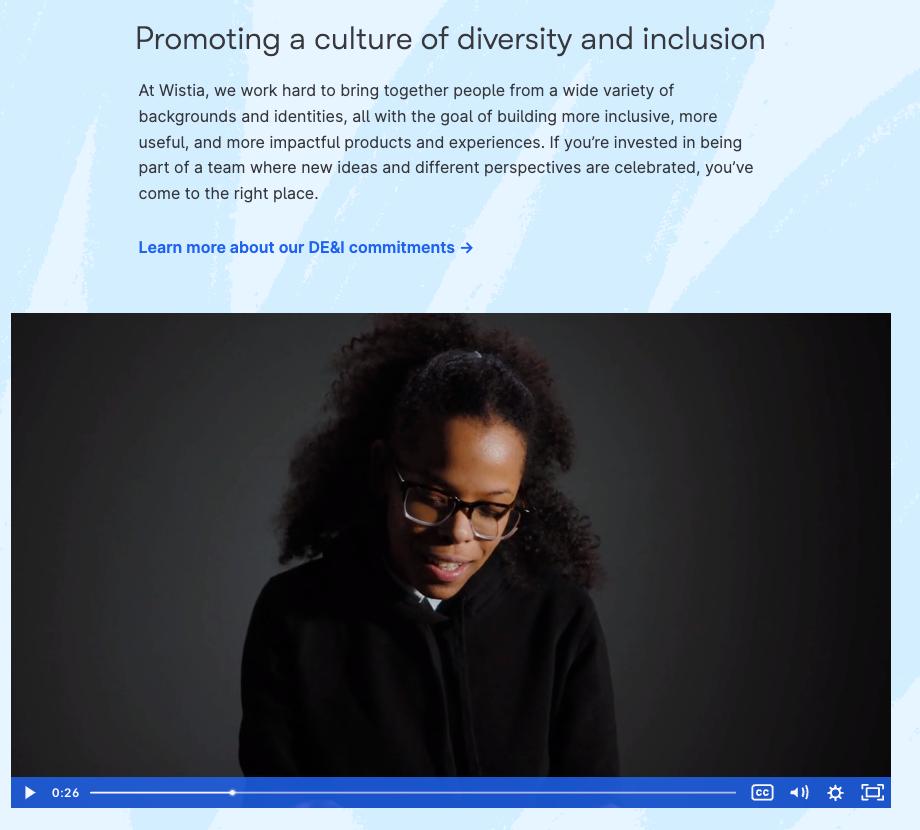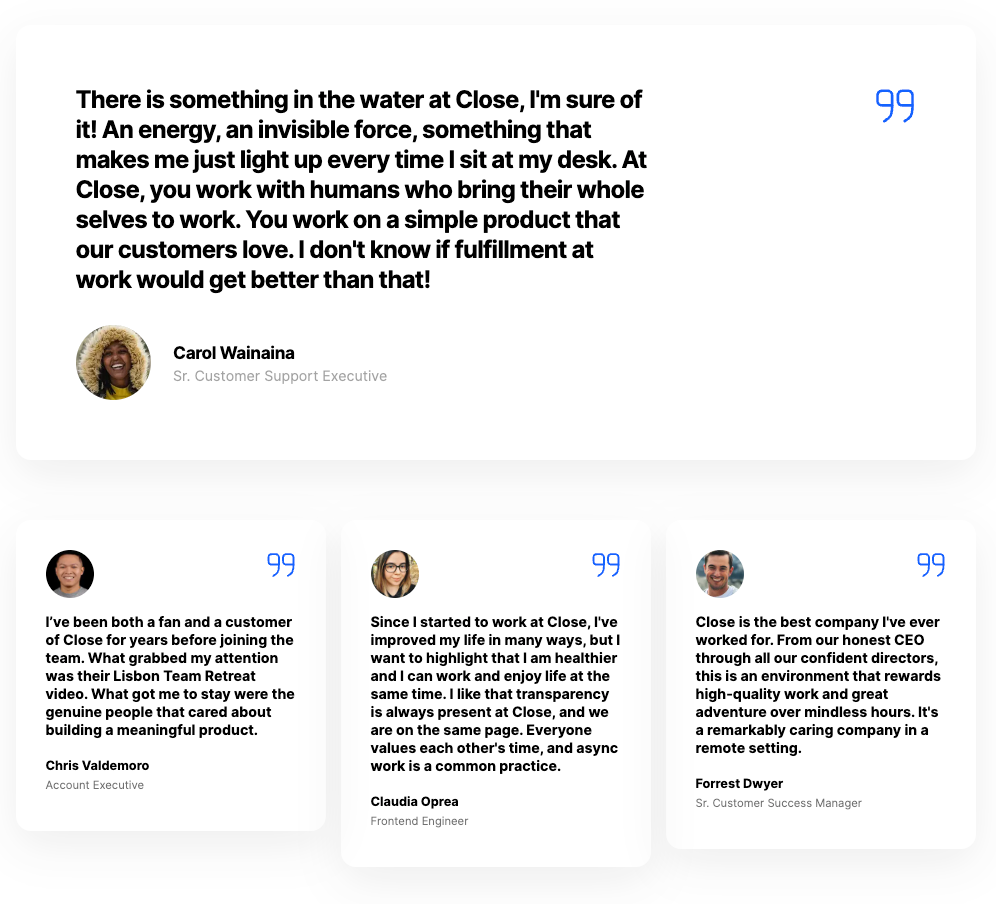Attracting great people starts with how you position your company
Let's take a look at how companies from the PFJ community show candidates what it's like to work with their team.

Most companies understand positioning as a way to define how their product or service stands out against the competition. Fewer take the extra step to apply positioning strategies to their company itself when it comes time to make a critical hire for your team.
Understanding what makes your company a great place to work and communicating it to the world as part of your employer brand “…affects recruitment of new employees, retention and engagement of current employees, and the overall perception of the organization in the market.”
Using your employer brand to attract talent
Talented people have a lot of choices when it comes to where they work, which means companies have to stand out against the competition when it comes to attracting them. The employer/employee relationship has to be one of mutual benefit, and the best companies do well to adopt a mentality of serving their employees in much the same sense that they serve their customers.
In practical terms, your employer brand will be communicated in your company values, on your careers page, in job postings, and even through marketing channels like social media. In total, they should answer the question, “Why work here?”
The companies featured on People-First Jobs are a great place to start if you’re looking for some inspiration. Here are just a few examples of how they position their companies throughout the hiring process.
Clearly articulate your values
Your company’s values should explain what makes you unique and demonstrate what you’re all about. For the job seeker, it should answer questions like:
- What is important to your team?
- How do you work together?
Communicate your values with clear, simple language on your company website, ideally on a page dedicated to careers, jobs, or life at your company. Make an effort to go beyond a list of benefits and perks, which can feel superficial or even misleading. For example, unlimited vacation is meaningless without clear guidance around expectations for actually taking it, along with leadership that sets an example.
The careers page for Seer Interactive provides examples of how they demonstrate their values with everyday behaviors:

Taking it a step further, Help Scout frequently shares a behind-the-scenes look at their values through their blog, writing about topics like their onboarding process and how they planned a remote company retreat, or how their team members spend their sabbaticals.
Create detailed and transparent job postings
When looking for a new job, nothing frustrates people more than ambiguous or vague job postings that give little to no insight into their responsibilities or what it’s like to work at a company. Job seekers want specific, illustrative examples.
In a survey we conducted, respondents listed a detailed outline of day-to-day activities as one of the most common missing pieces in job postings. When asked, “What is one thing you’d like to know about a company that is not usually included in a job posting?”, this answer typifies a common sentiment:
What’s it really like to work there. What do their “best” employees do that makes them the best?
Similarly, people like to see detailed values with proof and the truth about how they support employees. Not platitudes like “competitive compensation” or “compensation commensurate with experience.” Writing with clarity is damn hard work, but it's worth the effort.
Candidates also look for transparency when it comes to salaries, and if you're looking for a company that does a stellar job when it comes to salary transparency, check out how the Customer.io team approaches their job postings. They not only include what they’re looking for in a candidate but also list some specific things the candidate will do in the role, all the benefits they provide (salary included), and what their culture is like. Additionally, if hiring for diversity is a priority for your company (which we think it should be!), posting a salary range with your job opening is an excellent way to close the wage gap and attract a more diverse pool of candidates.
Don’t forget to connect the dots. The Customer.io team provides links from their job postings back to the careers page on their site where interested applicants can get an in-depth look at what’s it like to work with their team.
Ask current employees to tell their story
One of the most common techniques for positioning your product is to show how much other people love using it. Using social proof in the hiring process can also be incredibly effective because job seekers want to see and hear from real employees.
Job seekers expect to find photos of smiling people on a team retreat at the beach. These are essential events that create camaraderie (especially for remote teams!) but don’t tell the whole story. Aim to exceed expectations with personal and unexpected touches.
The folks at Wistia created a video that showcases team members reading anonymous responses from an internal survey on diversity and inclusion:

Close shares testimonials from current employees on their about page:

The bottom line: be genuine
Companies with unhealthy work environments tend to get all the attention (and admiration) in the job market and fill their recruiting process with overused (and often untrue) cliches and catchphrases. We think it’s crucial to give people a clear, honest, and genuine picture of what a company is like. It’s a big part of why we built People-First Jobs, and why we insist on transparency and specificity in our company profiles.
If you’ve put the hard work into creating a people-first company, invest in communicating your values, craft thoughtful job descriptions, and incorporate employee stories to help you stand out in the crowd.
More resources
For more guidance on creating a strong employer brand, check out some of these resources:
- The Society for Human Resource Management (SHRM) offers a massive library of tools and examples, as well as advice specific to managing employer brand during COVID-19.
- Built-In offers a comprehensive guide to understanding and crafting your employer brand, starting with your employee value proposition all the way through the candidate interview experience and beyond.
- Harvard Business Review is another trustworthy source to learn about strengthening your reputation as an employer.
